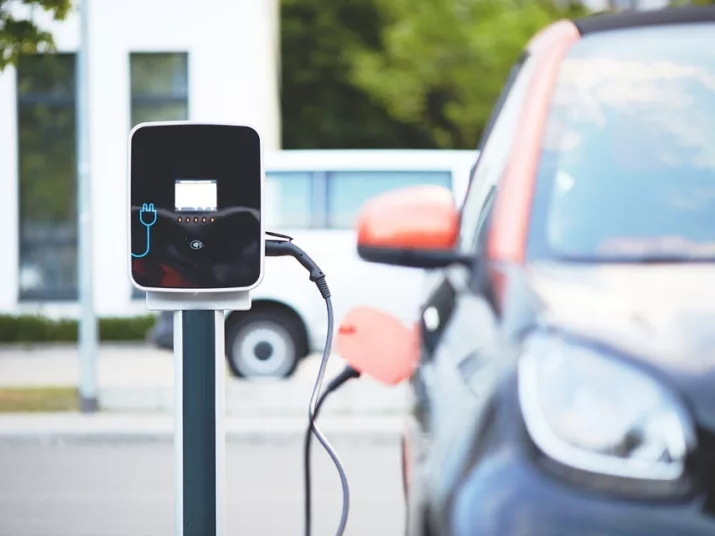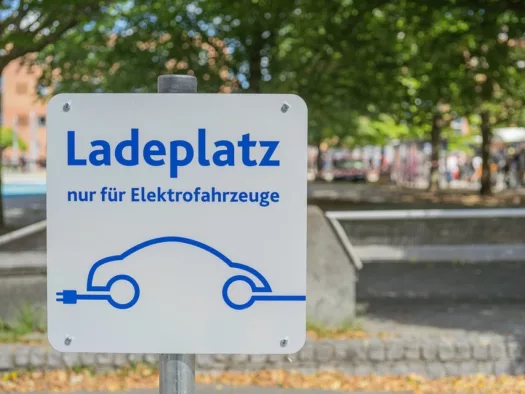
According to the International Energy Agency, more than three million e-vehicles were on the roads worldwide in 2018. And the trend is upwards.
ENERGY SOURCES
WHEN THE SOCKET BECOMES A TAP
Cities are choking in smog, even as fossil fuels are running out. In these times of the energy transition, electromobility has become a beacon of hope for many people. But does the technology deliver all that it promises?

According to the International Energy Agency, more than three million e-vehicles were on the roads worldwide in 2018. And the trend is upwards.
Whether power-assisted bicycle, electric scooter, e-car or battery electric bus, electromobility could be a common sight on our roads in the future. More than three million e-vehicles were on the road worldwide in 2018, according to the International Energy Agency. [1] And the trend is upwards. The research and advisory group Wood Mackenzie expects the number of electrically driven vehicles in the world to rise to around 280 million by 2040. [2] How climate-friendly is the new technology really? And what about the resources used in production? A fact check.
DO E-CARS REALLY PRODUCE ZERO EMISSIONS ON THE ROAD?
Yes – and no. E-cars are emission-free because, unlike petrol or diesel, they don’t emit any climate-damaging carbon dioxide. Also, pollutants such as particulate matter and nitrogen oxides, which have been responsible to date for the smutty air in road traffic, will no longer be emitted. This makes e-vehicles ideal when it comes to improving the air quality in urban areas.
E-cars are ideal for improving the air quality in big cities. But they’re not completely emission-free, because CO2 is produced during their manufacturing process.

Apart from that, a study by the Institute for Energy and Environmental Research (ifeu) in Heidelberg, which was commissioned by Agora Verkehrswende, has shown that, despite causing no CO2 emissions during the actual journeys themselves, e-mobility still produces emissions that are harmful to the climate. [3] That’s because most e-cars in Germany still run on electricity generated from coal and natural gas. In addition, a lot of energy is consumed, and CO2 produced, in the production of the vehicles and batteries. As a result, the eco-balance of e-cars during production is worse than that of comparable vehicles with internal-combustion engines. According to the ifeu researchers, e-vehicles need to travel several thousand kilometres with the most low-carbon electricity possible in order to compensate for this downside.
Nevertheless, it remains a fact that, when the entire life cycle is taken into consideration, the electric car already has a climate advantage over the combustion engine. The ifeu study also found that e-cars will have a clear advantage over cars with conventional combustion engines if the CO2 balance during the production – of batteries, for instance – is improved, and if e-vehicles are only powered with renewable energies. In this case, electromobility could become the key to the energy transition in the transport sector.
E-MOBILITY PROMOTES THE ENERGY TRANSITION. IS THAT TRUE?
Yes. In the future, e-cars, power-assisted bicycles and the like will offer optimal conditions for using renewable energies without any problems. How? For example, electric cars could take us wherever we want to go without causing emissions or noise. Then they’d be parked in the garage and plugged into the electric socket. The electricity would come from the solar system on the roof of the house. An intelligent power grid would link all components together, thereby ensuring a smooth power supply.
Are there enough resources for the expansion of electromobility? Researchers and representatives of the industry are currently still at odds on this issue.

A further advantage of e-mobility in times of digital networking: it ensures that green electricity becomes more reliable. In the future, for example, it will be possible to use cars as mobile electricity storage units (vehicle-to-grid) that absorb surplus energy – for example, from our private photovoltaic systems – and make it available on demand at those times, for instance, when the sun isn’t shining.
ARE THERE ENOUGH RESOURCES FOR THE EXPANSION OF E-MOBILITY?
In principle, yes. According to a study by the Oeko-Institut (Institute for Applied Ecology) that was commissioned by Agora Verkehrswende, there are enough resources to facilitate a worldwide switch to electric cars: the most important raw materials such as lithium, cobalt, graphite and nickel are available in sufficient quantities. [4] In addition, rechargeable batteries are expected to require less and less lithium per kilowatt hour of stored energy in the future.
Solutions for recycling lithium have already been developed. However, they’re not yet being used because the cost of the raw material is currently still low. Fuels such as hydrogen, bioethanol, natural gas or autogas are further alternatives for replacing fossil fuels in the long term.
READ MORE
How eco-friendly are electric cars? Read more here.
[1] https://webstore.iea.org/global-ev-outlook-2018
[2] https://www.woodmac.com/news/editorial/the-electric-vehicle-story-so-far/
[3] https://www.agora-verkehrswende.de/fileadmin/Projekte/2018/Klimabilanz_von_Elektroautos/Agora-Verkehrswende_22_Klimabilanz-von-Elektroautos_WEB.pdf
[4] https://www.oeko.de/publikationen/p-details/strategien-fuer-die-nachhaltige-rohstoffversorgung-der-elektromobilitaet/